Luna moth facts, pictures and in-depth information.
Page Index
- What Is A Luna Moth?
- Luna Moth Facts (At A Glance)
- Other Luna Moth Facts
- How To Identify A Luna Moth
- How To Identify A Luna Moth Caterpillar
- Where Are Luna Moths Found?
- Is It Rare To See A Luna Moth?
- Is The Luna Moth Endangered?
- Luna Moth Habitat
- Luna Moth Life-Cycle
- Luna Moth Facts: Related Pages
What Is A Luna Moth?
The luna moth is a large green moth found in North America (the species occasionally also appears in Western Europe as a vagrant). It is a member of the subfamily Saturniinae, within the family Saturniidae (the giant silk moth family).
Easily identified due to its large size, lime-green color, and the long, tail-like extensions of the hindwings, the luna moth flies at night and is typically found in deciduous hardwood woodlands and forests.
Read on to find out more about this distinctive American moth…
Luna Moth Facts (At A Glance)
- Scientific name: Actias luna
- Type of Animal: Insect
- Animal Family: Saturniidae (the giant silk moth family)
- Where Found: North America
- Pupae Body Length: 2.75 to 3.5 in. (7.0 to 8.9 cm)
- Adult Wingspan: 3 to 7 inches (7.6 to 17.8 cm)
- Conservation Status: Secure (source)
Other Luna Moth Facts
- In its adult form the luna moth’s mouthparts are non-functioning and the insect does not eat. It lives off energy stored up from its pupal stage.
- The luna moth only lives for around seven days in its adult form.
- Luna moth larvae (caterpillars) feed on the leaves of a variety of broadleaf trees, including white birch, American persimmon, American sweet gum, and species of hickory, walnut and sumac.
- Luna moth larvae regurgitate their food in order to deter predators, and also make a clicking sound as a warning by rubbing their serrated mandibles (jaws) together.
- The long, tail-like extensions of the adult’s hindwings are thought to confuse the echolocation of bats that feed on the moths.
How To Identify A Luna Moth
In its adult form the luna moth is easily identified due to its combination of large size, pale green color and hindwing tails. Its unique appearance means that it is easily distinguished from other North American species.
On each of the luna moth’s four wings is a single, pale eyespot with a darker, ‘eyebrow’-like top edge.
A thick dark stripe runs along the front edge of the insect’s forewings and over the head. Thin reddish and white stripes run along the rear edges of both the front and hind wings.
The luna moth has prominent, feathery antennae. Those of the male are especially feathery.
The luna moth wingspan is between 3 and 7 inches (7.6 and 17.8 cm), making the species one of the largest moths of North America.
How To Identify A Luna Moth Caterpillar
Where Are Luna Moths Found?
In the United States, luna moths are found east of North Dakota in the north to east Texas in the south. In Canada, the species is present from Saskatchewan eastwards.
Is It Rare To See A Luna Moth?
Although relatively common, the luna moth is rarely seen due to its nocturnal lifestyle and short lifespan as an adult. Because adults do not feed, they are not seen on flowers collecting nectar.
Is The Luna Moth Endangered?
The luna moth is not currently threatened. Its conservation status is ‘Secure’.
Luna Moth Habitat
Typical luna moth habitat is deciduous woodland. The species may be found in any habitat containing its host trees. The luna moth spends the first two stages of its life (egg and larva) in a tree, only descending to the ground prior to spinning the silk cocoon in which it pupates.
Luna Moth Life-Cycle
In the southernmost parts of the luna moth’s range adults begin to emerge in February, and there may be up to three generations per year.
In more northerly regions, adults emerge in May and June, and only one generation will appear each year.
Female luna moths emit pheromones (scent chemicals) to attract males. After mating, the female will lay between 200 and 400 eggs on the undersides of the leaves of its food plants. The eggs hatch after around 14 days.
As the pupa grows, it sheds its skin every 4 to 10 days, with each stage being known as an ‘instar’. A luna moth goes through five instars before pupating. It will spend a total of 6 to 7 weeks in its larval form.
Luna Moth Facts: Related Pages
- Discover the amazing world of insects on this page: Insects: The Ultimate Guide
- Find out about another iconic American butterfly: Monarch Butterfly Facts

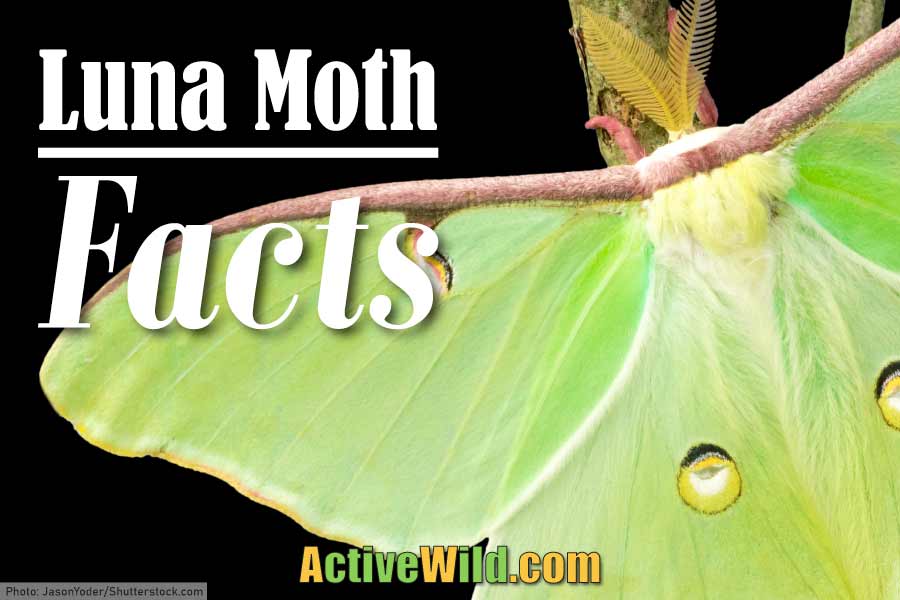
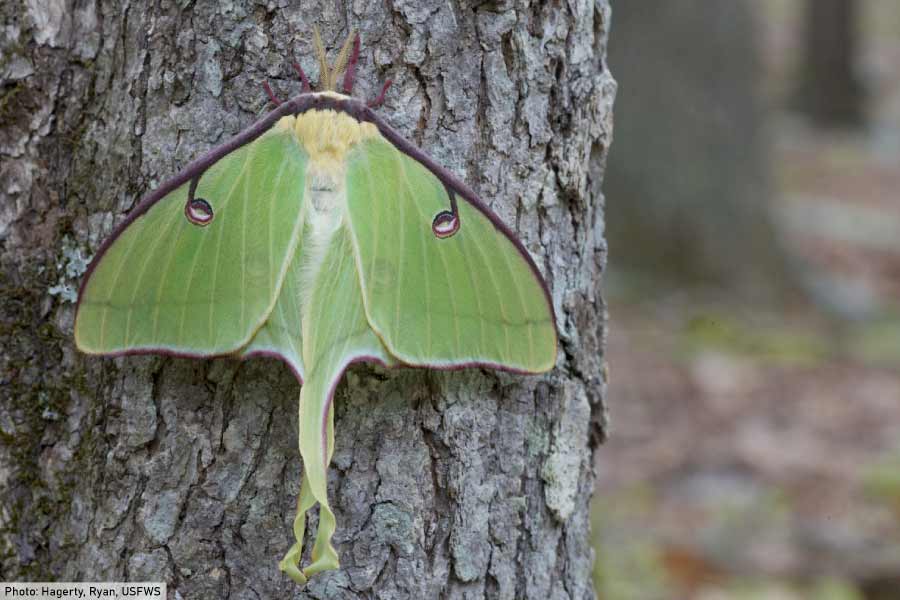

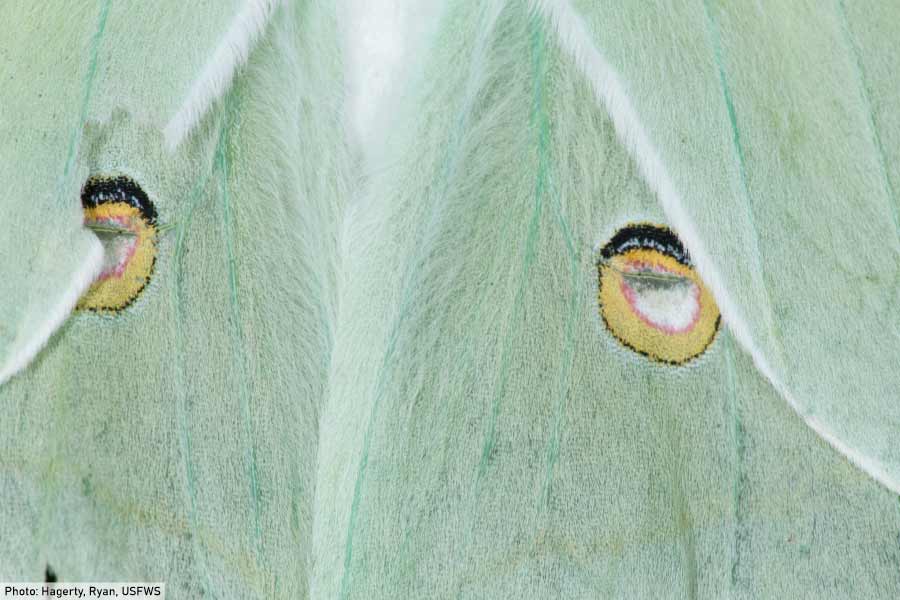
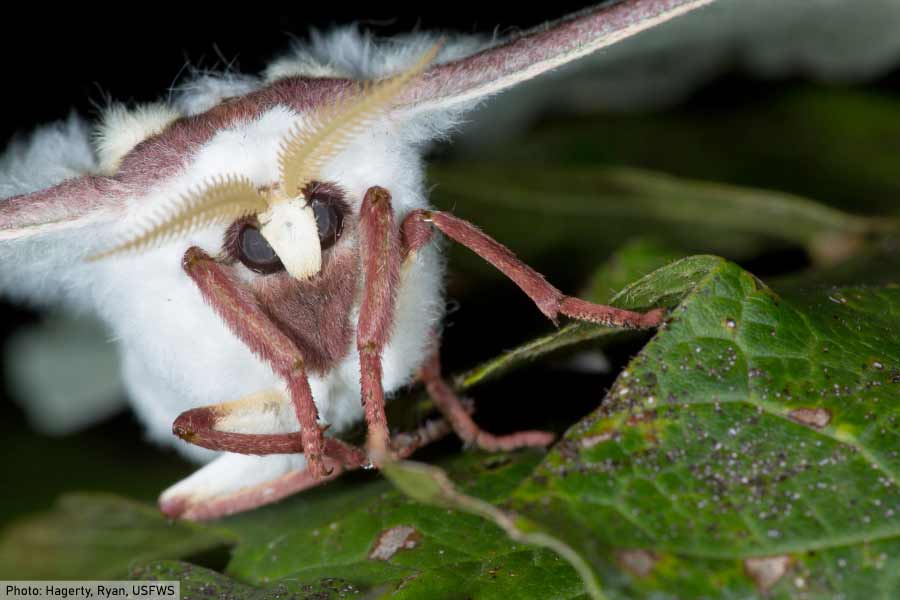
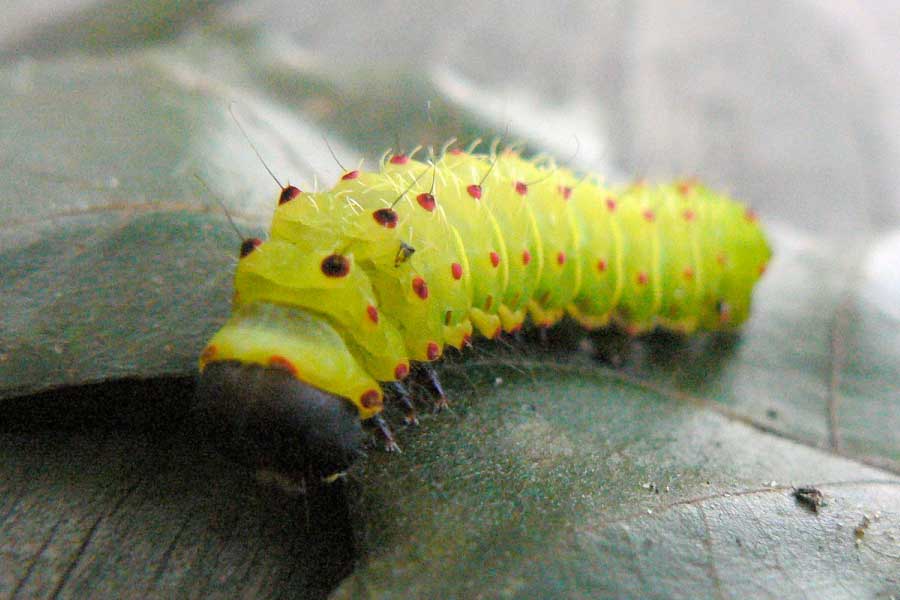
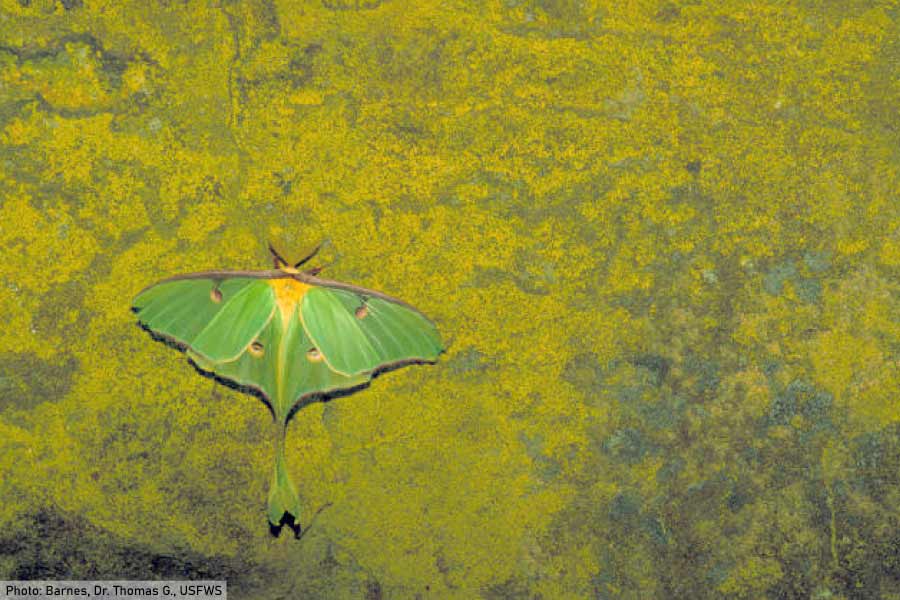

I have never seen a Luna moth, but I love them, just like any moth in general. it’s sad they only live one week.
We had a Luna moth visit us this morning it was by our outdoor light and stayed a long time before flying off I’m always amazed when I see one which isn’t that often last time was 10 yrs ago I have to say they are my favorite I’m from Florence Wisconsin
We had our second visit from a luna moth in the same place on our porch! Last year it landed on a kitchen screen and stayed for a while and this year, same place and a luna moth ! They are so beautiful and quite gentle looking, I hope they will be back next year
I have 2 Luna moths on my screen door. Huge and beautiful! I live in Southern Missouri.
My husband and I have one we think there is another by our shed in the yard and we live in Ocean City Md
My son found a moth that looks like a Luna, but has very tiny black dots where you show eyes to be, and measures 3″x3″ and is light green. what is it? It is on the side of his house in a semi-rural area of Woodridge, IL..
that’s cool. one time my mom found a HUGE moth on our front door knob.
I had a Luna moth land on me when I was out in east Texas feeding my horses. It was huge and it just stayed on my shirt. It was huge and beautiful! I left it on a persimmon tree.I didn’t know what it was or what it ate but now im glad I picked that tree!
What a great experience (and choice of tree 👍)! Thanks for letting us know. 🙂
Regards,
The Active Wild Team
I live in Madison and for the last two years a Luna Moth come to my door every year around May , The moth stay there for two days on my porch , I took a picture of it . The Luna Moth is very big and beautiful
I had two Luna moths one on my front door and the other on my washer I live in a rural area in Citronelle Alabama they just came up last night the one on the washer has gone the one on the door is still there could I put it in a jar
I have a luna caterpillar that has begun its process. How long before it hatches, we have it in a gallon jar with sticks and its curled up in a leave. How do I ensure this moth hatches?
I’m sure I have a lunar moth but its brown
Might be a Polyphemus moth
I have a Luna Moth in my apartment and has laid eggs on my wall. What am I supposed to do? I will not kill them. I love them.
Ideally the eggs should be left alone. If the eggs are hard they can be moved with extreme care, ideally with a delicate paintbrush. If the eggs are soft they should be left where they are – they may harden in a few days. If the eggs won’t move then don’t force them – they should be left in place.